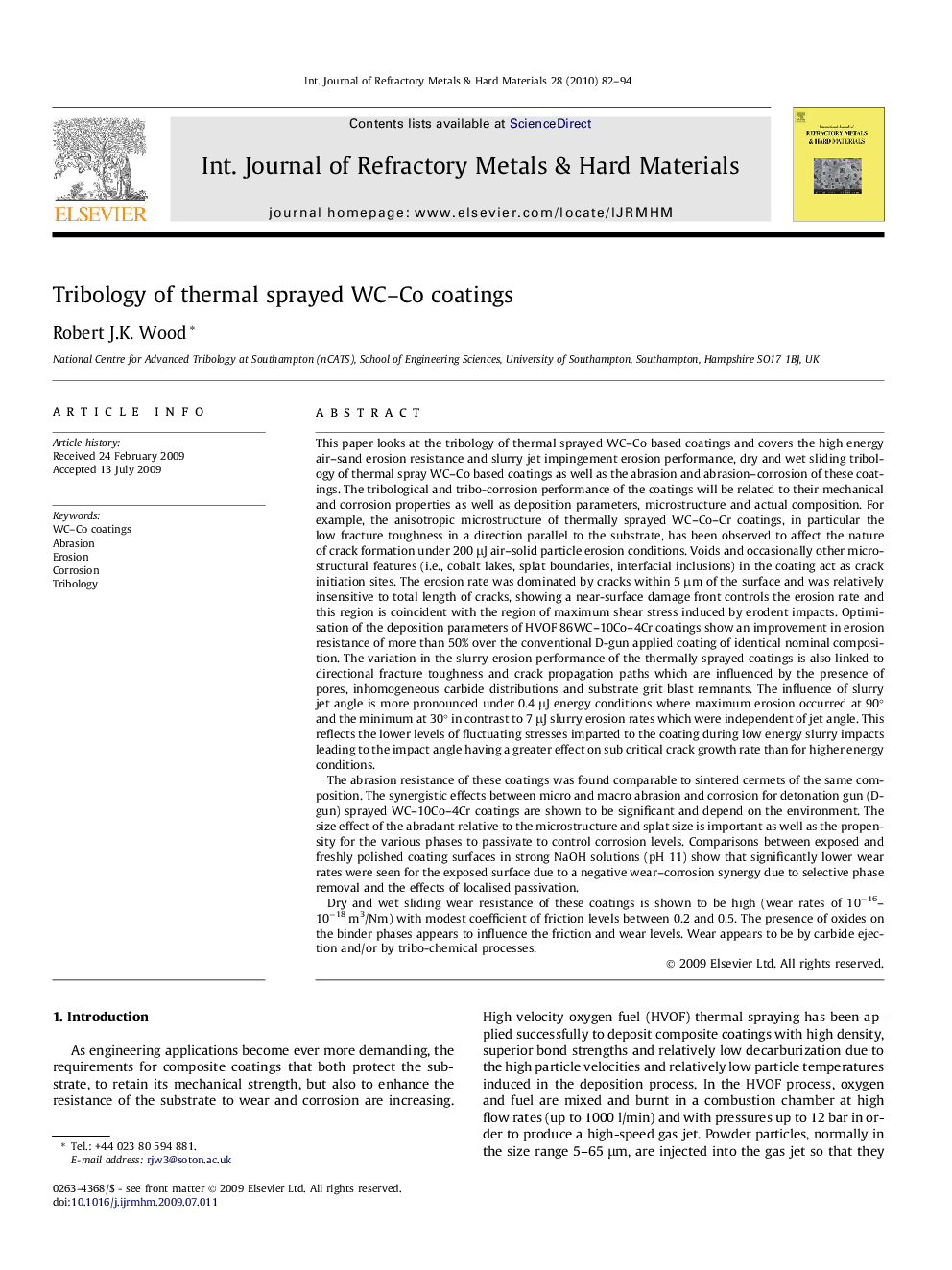| کد مقاله | کد نشریه | سال انتشار | مقاله انگلیسی | نسخه تمام متن |
|---|---|---|---|---|
| 1604045 | 1516002 | 2010 | 13 صفحه PDF | دانلود رایگان |

This paper looks at the tribology of thermal sprayed WC–Co based coatings and covers the high energy air–sand erosion resistance and slurry jet impingement erosion performance, dry and wet sliding tribology of thermal spray WC–Co based coatings as well as the abrasion and abrasion–corrosion of these coatings. The tribological and tribo-corrosion performance of the coatings will be related to their mechanical and corrosion properties as well as deposition parameters, microstructure and actual composition. For example, the anisotropic microstructure of thermally sprayed WC–Co–Cr coatings, in particular the low fracture toughness in a direction parallel to the substrate, has been observed to affect the nature of crack formation under 200 μJ air–solid particle erosion conditions. Voids and occasionally other microstructural features (i.e., cobalt lakes, splat boundaries, interfacial inclusions) in the coating act as crack initiation sites. The erosion rate was dominated by cracks within 5 μm of the surface and was relatively insensitive to total length of cracks, showing a near-surface damage front controls the erosion rate and this region is coincident with the region of maximum shear stress induced by erodent impacts. Optimisation of the deposition parameters of HVOF 86WC–10Co–4Cr coatings show an improvement in erosion resistance of more than 50% over the conventional D-gun applied coating of identical nominal composition. The variation in the slurry erosion performance of the thermally sprayed coatings is also linked to directional fracture toughness and crack propagation paths which are influenced by the presence of pores, inhomogeneous carbide distributions and substrate grit blast remnants. The influence of slurry jet angle is more pronounced under 0.4 μJ energy conditions where maximum erosion occurred at 90° and the minimum at 30° in contrast to 7 μJ slurry erosion rates which were independent of jet angle. This reflects the lower levels of fluctuating stresses imparted to the coating during low energy slurry impacts leading to the impact angle having a greater effect on sub critical crack growth rate than for higher energy conditions.The abrasion resistance of these coatings was found comparable to sintered cermets of the same composition. The synergistic effects between micro and macro abrasion and corrosion for detonation gun (D-gun) sprayed WC–10Co–4Cr coatings are shown to be significant and depend on the environment. The size effect of the abradant relative to the microstructure and splat size is important as well as the propensity for the various phases to passivate to control corrosion levels. Comparisons between exposed and freshly polished coating surfaces in strong NaOH solutions (pH 11) show that significantly lower wear rates were seen for the exposed surface due to a negative wear–corrosion synergy due to selective phase removal and the effects of localised passivation.Dry and wet sliding wear resistance of these coatings is shown to be high (wear rates of 10−16–10−18 m3/Nm) with modest coefficient of friction levels between 0.2 and 0.5. The presence of oxides on the binder phases appears to influence the friction and wear levels. Wear appears to be by carbide ejection and/or by tribo-chemical processes.
Journal: International Journal of Refractory Metals and Hard Materials - Volume 28, Issue 1, January 2010, Pages 82–94